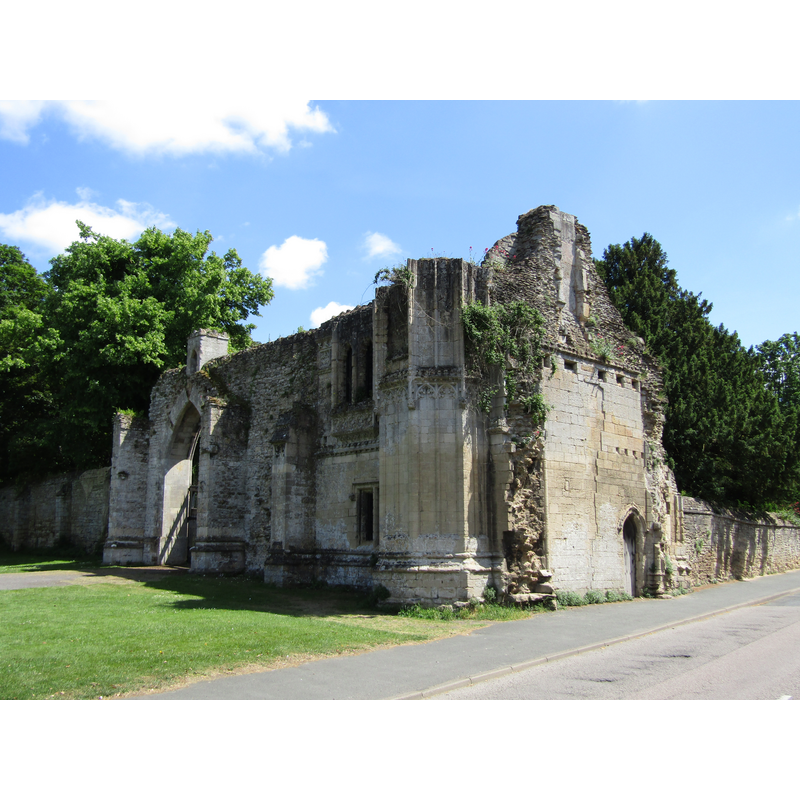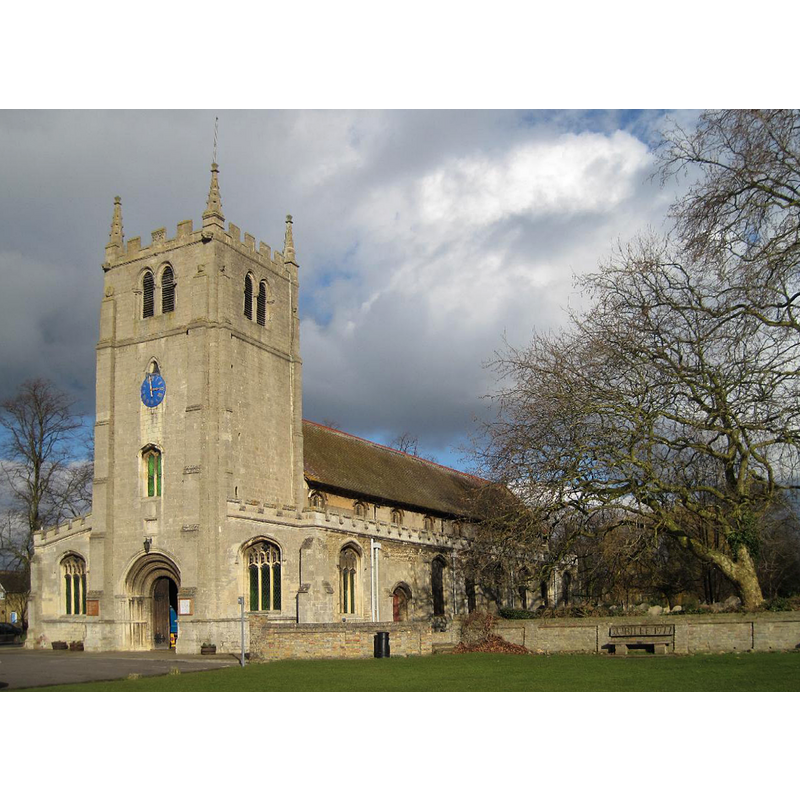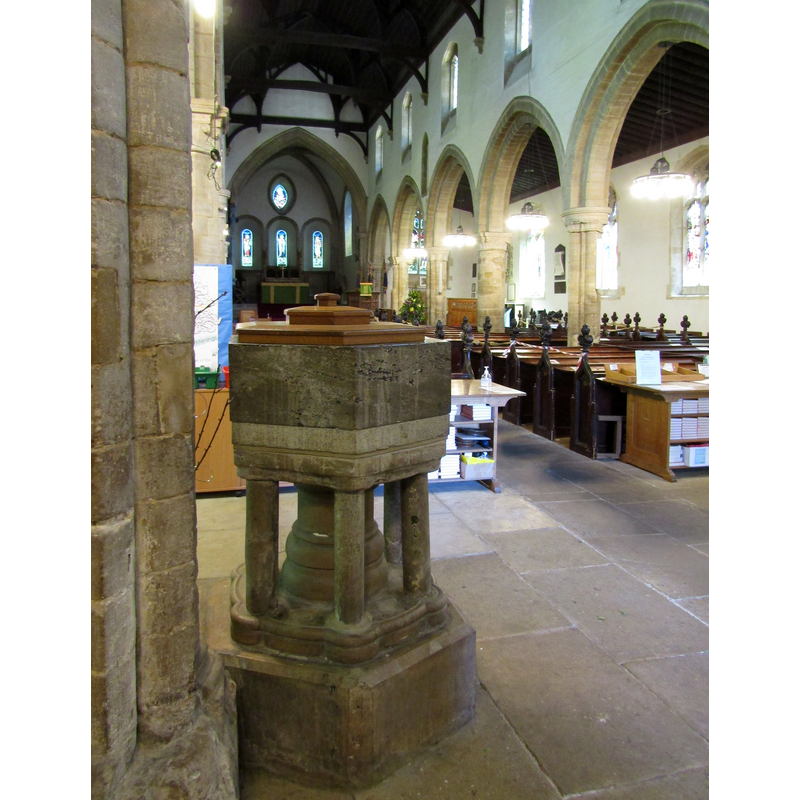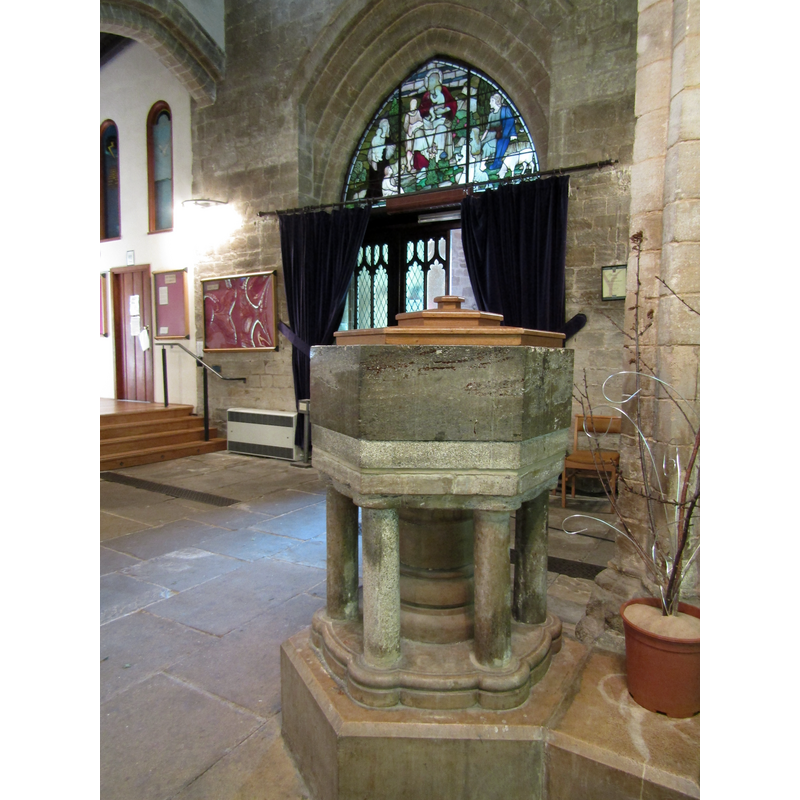Ramsey nr. Peterborough

Image copyright © Colin Smith, 2021
Image and permission received from the author (e-mail of 12 September 2021)
Results: 5 records
view of basin and cover
view of church exterior - ruins
Scene Description: ruins of the former Anglo-Saxon Benedictine monastery; it houses Ramsey's secondary school
Copyright Statement: Image copyright © Colin Smith, 2021
Image Source: digital photograph 12 June 2021 by Colin Smith
Copyright Instructions: Image and permission received from the author (e-mail of 12 September 2021)
view of church exterior - southwest view
view of font and cover in context
INFORMATION
FontID: 09969RAM
Object Type: Baptismal Font1
Church/Chapel: Parish Church of St. Thomas a Becket [aka St. Thomas of Canterbury Church]
Church Patron Saints: St. Thomas of Canterbury [aka St. Thomas à Becket]
Church Location: Church Green, Ramsey, Huntingdon PE26 1DW, UK
Country Name: England
Location: Cambridgeshire, East
Directions to Site: Located on the B1096, N of Huntingdon and St. Ives, 15-20 km SE of Peterborough
Ecclesiastic Region: Diocese of Ely
Historical Region: formerly Huntingdonshire -- Hundred of Hurstingstone
Font Location in Church: Inside the church, in the nave
Century and Period: 13th century, Early English
Credit and Acknowledgements: We are grateful to Colin Smith for his photographs of this church and font
Font Notes:
Click to view
Listed in Paley (1844) as a hexagonal baptismal font. In Geldart (1899) after Pugin. The Victoria County History (Huntingdon, vol. 2, 1932) notes: "in 1139, Pope Innocent II refers to Bury chapel just after it was built, according to architectural evidence, as being situated next the monastery [...] A parish church, however, existed at Ramsey before 1291, when we have a return of it. [...] The present building, which was originally erected about 1180, is of peculiar plan. [...] As in the case of all monasteries of Pre-Conquest foundation, the parishioners of Ramsey doubtless had rights in the monastic church. After the introduction of stricter rule and more elaborate services in the 12th century, particularly the Sunday Procession, the parochial services, probably at Ramsey as elsewhere, interfered with those of the monks. Hence, accommodation for the parishioners was no doubt made by a parochial chapel outside the monastic church, but possibly at a later date than was customary elsewhere if the present church had been originally an infirmary. [...] The blue marble hexagonal font of about 1200 was found about 1844 buried below the floor of the aisle. It has a circular central shaft and six angle shafts." Described in Pevsner (1968): "Font. Hexagonal, absolutely plain, and of some species of dark marble. Probably C13 too. The existence of a font, as Mr Dickinson remarked to me, would also point to parcochial use [of the church] in the C13 -- i.e. if the font is in its original habitat." Listed in Stocker (1997) as a "deep burial" instance in his listing of "font bowls reportedly discovered under church floors and set beneath successors." Baxter (2003) notes in the CRSBI (2008): "The font is not included in this report since (and in spite of Black's assertion that it is earlier than any of the fabric) it is an early- to mid-13thc. piece, but this is of interest since it suggests that the church was in parochial use at that time." [Baxter's reference is to Black's 'Notes on Ramsey', 1904]. A 1901 photograph of the Ramsey font is listed in the CALM on-line catalogue [http://calm.cambridgeshire.gov.uk/ArchiveCatalogue/] [accessed 20 April 2012] as part of the Hunts Photograph Collection, Huntingdonshire Archives [ref.: PH63/39/2].
COORDINATES
Church Latitude & Longitude Decimal: 52.44902, -0.1017
Church Latitude & Longitude DMS: 52° 26′ 56.47″ N, 0° 6′ 6.12″ W
UTM: 30U 695704 5814991
MEDIUM AND MEASUREMENTS
Material: stone, marble? (dark)
Font Shape: hexagonal (mounted)
Basin Interior Shape: round
Basin Exterior Shape: hexagonal
LID INFORMATION
Date: modern
Material: wood, oak?
Apparatus: no
Notes: hexagonal with knob handle; modern
REFERENCES
Victoria County History [online], University of London, 1993-. Accessed: 2012-04-20 00:00:00. URL: https://www.british-history.ac.uk.
Corpus of Romanesque Sculpture in Britain and Ireland, The Corpus of Romanesque Sculpture in Britain and Ireland, The Corpus of Romanesque Sculpture in Britain and Ireland. Accessed: 2005-02-16 00:00:00. URL: http://www.crsbi.ac.uk.
Geldart, Ernest, A manual of church decoration and symbolism, containing directions and advice to those who desire worthily to deck the church at various seasons of the year: also, the explanation and the history of the symbols and emblems of religion, Oxford, London: A.R. Mobray & Co., 1899
Paley, Frederick Apthorp, Illustrations of Baptismal Fonts, London, UK: John van Voorst, 1844
Pevsner, Nikolaus, Bedfordshire and the County of Huntingdon and Peterborough, Harmondsworth: Penguin, 1968
Stocker, D.A., "Fons et origo: The Symbolic Death and Resurrection of English Font Stones", I (1997b), Church Archaeology, 1997, pp. 17-25; p. 24



